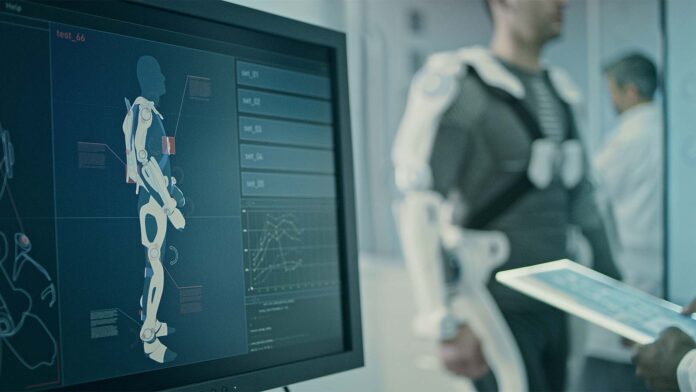The human spine, with its distinctive “S” shape, enables upright posture and bipedal locomotion, which freed the upper limbs for tool use, artistic pursuits, and technological advancements. However, this evolutionary adaptation comes at a cost. The upright posture subjects the spinal column to significant biomechanical stress, particularly during heavy lifting or repetitive movements. Over time, these stresses can result in debilitating conditions such as lower back pain, intervertebral disc herniation, and other musculoskeletal disorders. A while ago, we discussed the use of exoskeletons across various fields and their rapid technological advancements. Now, Korean researchers have unveiled a state-of-the-art exoskeleton designed to mitigate these risks, offering an innovative solution to protect spinal health during physically demanding tasks.
BBEX: an exoskeleton for safe working conditions
Unlike conventional exoskeletons, the device developed by researchers at Seoul National University replicates the human spine, providing direct support to the vertebrae. Named the Bilateral Back Exoskeleton Extensor (BBEX), the prototype was presented in Science Robotics, accompanied by a study explaining its development and testing.
Inspired by the human spine and its muscular system, the BBEX features a multi-degree-of-freedom structure and connected linear actuators. This design allows it to naturally follow the movements of the spine, providing continuous support at every angle. The device significantly reduces muscle fatigue and joint loading during lifting tasks, whether performed symmetrically or asymmetrically.
In addition, the BBEX incorporates advanced sensors that monitor user posture and exertion in real-time. These sensors enable adaptive assistance, optimizing both support and comfort for the user. The exosuit’s ergonomic and lightweight design enhances its usability in work environments where agility of movement is critical.
To evaluate the prototype, the research team conducted trials with eleven healthy participants. Designed for environments requiring heavy lifting, the BBEX demonstrated its ability to reduce muscle fatigue, decrease joint compression forces, and provide multidimensional assistance. These features could significantly reduce workplace injuries. The developers highlighted its potential in industries like construction, where safety is paramount, but acknowledged the challenge of creating customizable models to suit users with different heights and body builds.
Exoskeletons that walk the walk
In addition to their use in work environments, exoskeletons are being explored to restore mobility for individuals with physical disabilities. A French company specializing in wearable robotics has proposed the use of these devices for people with conditions such as paraplegia.
During the Paris Olympics, a torchbearer showcased the viability of this technology by carrying the Olympic flame while walking with the assistance of an exoskeleton called Atalante, despite having been paralyzed since the age of eleven.
Kevin Piette, a Paralympic tennis player, was among the first athletes to test the Atalante, which is already being used in rehabilitation programs in the United States. The exoskeleton, which supports the legs, features a motor and battery system worn on the back like a backpack. Users operate it via a remote control that adjusts both direction and the level of assistance, from mild to total.
If the BBEX exoskeleton prototype for injury-free work piques interest, further advancements in exoskeleton technology are worth exploring. For instance, some exosuits are capable of lifting up to 200 hundred pounds with ease. Additionally, we have previously covered other safety innovations for the construction sector, such as wearable devices for on-site protection.
Sources:




